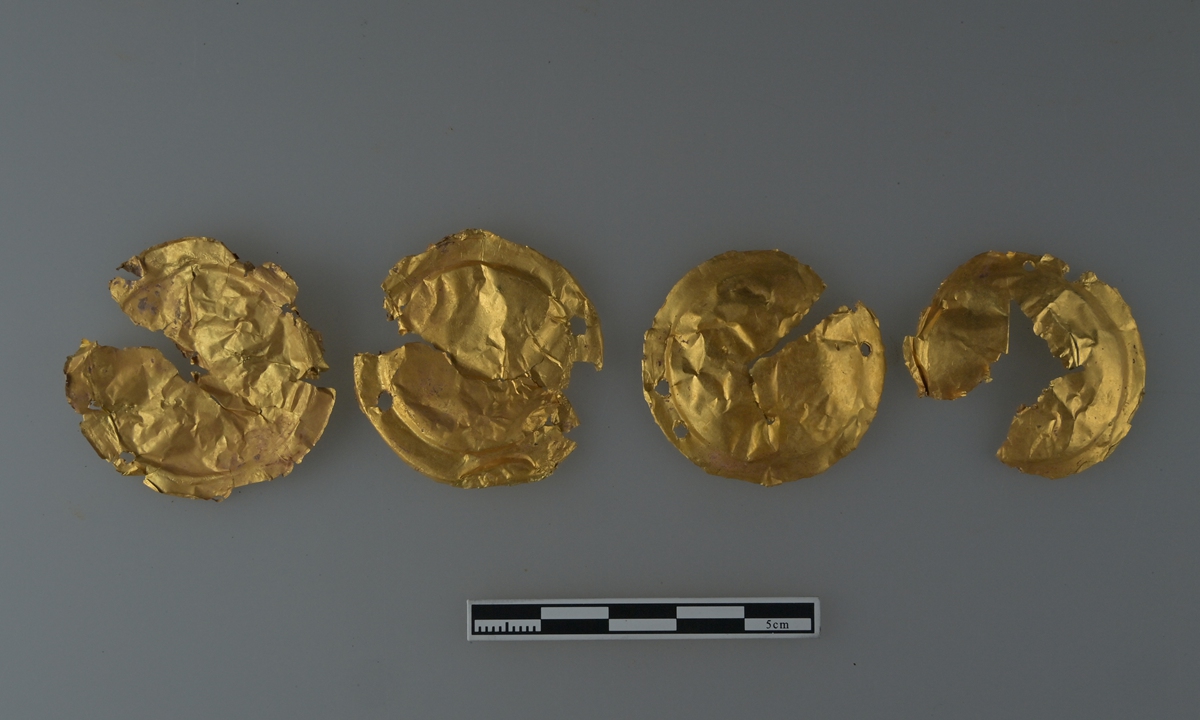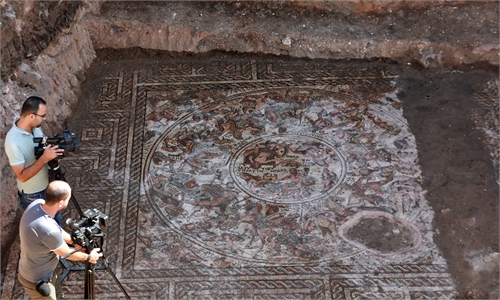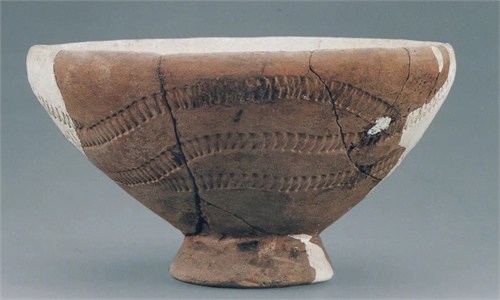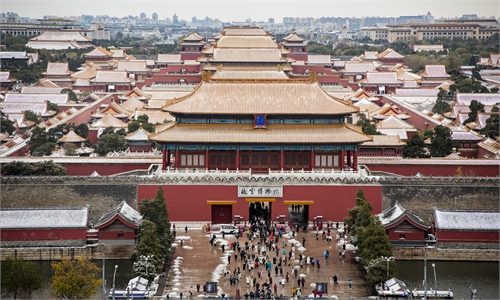
Gold wares unearthed from the M2 tomb of the Zhengzhou Shang City Ruins Photo: Courtesy of the Institute of Cultural Heritage and Archaeology in Zhengzhou
Two significant archaeological discoveries in Central China's Henan Province were revealed on Sunday at the 2022 Henan Archaeological Work Achievement Exchange Conference, according to the provincial cultural heritage administration.
One discovery is the Shuyuan Street Cemetery at the Zhengzhou Shang City Ruins. The Zhengzhou Shang City Ruins is recognized as an early capital of the Shang Dynasty (c.1600BC - 1046BC), said the city's Institute of Cultural Heritage and Archaeology.
Archaeologists noted that the Shuyuan Street Cemetery is an area with specific organization, planning, design and management.
Huang Fucheng, a research fellow at the Institute of Cultural Heritage and Archaeology in Zhengzhou who participated in the excavation, told the Global Times that the discovery of the Shuyuan Street Cemetery has greatly expanded archaeologists' understanding of the spatial and temporal layout of the ruins, which they speculate may have once been the political and economic center of the Shang Dynasty.
Archaeologists have unearthed more than 200 items from what is known as the M2 tomb, including 20 bronzes, 11 jade wares, six gold wares, 50 arrowheads and 120 shellfish coins.
Huang pointed out this is the first time that gold wares from the early and middle Shang Dynasty have been discovered in China. "It provides a new way to explore the origin of the Sanxingdui gold mask culture in Southwest China's Shu Culture. These two ancient groups may have had some cultural exchanges as the ancient Shu Culture is contemporaneous with the Shang Dynasty."
The M2 tomb is believed to have belonged to the highest-ranking individual buried at the site as it contained the largest number and the richest categories of funerary objects.
Chinese archaeologists found six pits for sacrificing dogs at the bottom of the M2 tomb, direct evidence for the origin of the dog sacrifice culture seen at tombs of high-ranking nobles in the late Shang Dynasty.
The other significant discovery is the remains of an ancient waterway dating to the Han and Wei period (206BC - AD265) at the Luoyang City Site in Luoyang, Henan Province.
Luyang was the home of a number of ancient capitals in early Chinese history.
Guo Xiaotao, the head archaeologist at the Luoyang City Site, told media that they have found four waterways since the excavation began in 2021.
"This is the first time we have found such large and exquisitely designed water facilities from the Han and Wei period at the Luoyang City Site," said Guo.
The archaeological site found that the stone made waterways in the period were basically water culverts composed of bottom plates, side plates, and cover plates. Among them, the top surface of the cover plate is connected with the ground road, and square holes on the cover plate are used for rainwater collection. Emperor Xiaowen of the Northern Wei Dynasty (386-534) also reused the water conservancy facilities in this area.
Han and Wei period researcher Song Guoyuan told the Global Times that this shows water conservation was already one of the major governing policies at the time.
"The water engineering system shows that the Han and Wei people distributed water resources to better people's lives, the city and also the environment," said Song, noting that the underground nature of the system reveals "sophisticated engineering wisdom."
The waterways were designed to allow water to run underground, but also had square holes designed for collecting rainwater.
Zhang Fanzeng, an architecture archaeologist, told the Global Times that hidden designs such as the rainwater holes also showed that ancient people also considered sustainability and the environment in architecture.
"Even now, such underground engineering projects need technological support. It is almost a mystery how the ancient Chinese were able to build this," Zhang noted.
Zhang also noted that many waterways built in ancient times served palaces and royal residences and that the newly discovered system in Henan holds great value for future research into the design of imperial gardens in ancient Luoyang.
Guo told media that the waterways also match descriptions documented in the Commentary on the Water Classics, China's most renowned ancient geographical book, which still inspires archaeological research on ancient Chinese landscapes.




